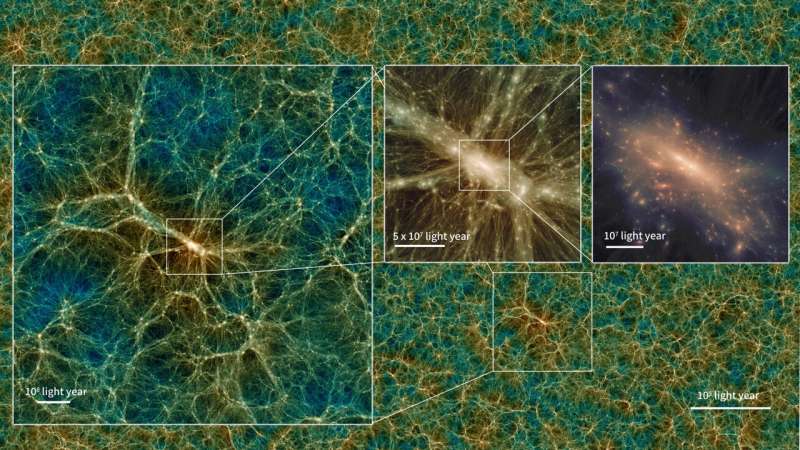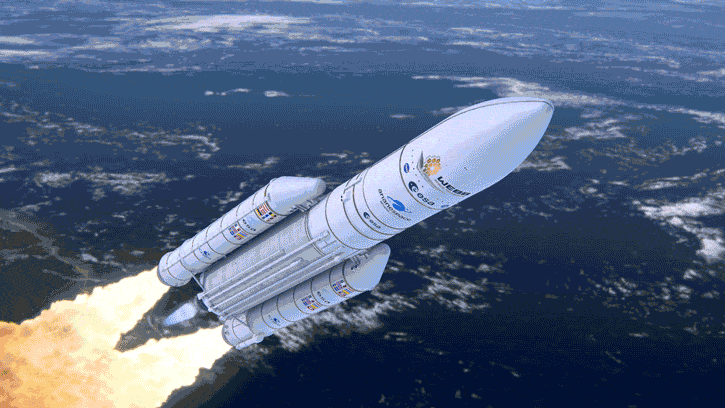
Copernical Team
Next generation of Orion spacecraft in production for future Artemis missions
 Over the next decade, NASA's Orion spacecraft will carry astronauts during Artemis missions to the Moon to help prepare for human missions to Mars. Work on the spacecraft for Artemis I is nearly complete, Artemis II is well underway, and NASA is making progress on vehicles for the missions beyond.
The agency recently completed welding on the Artemis III Orion pressure vessel, the underlyin
Over the next decade, NASA's Orion spacecraft will carry astronauts during Artemis missions to the Moon to help prepare for human missions to Mars. Work on the spacecraft for Artemis I is nearly complete, Artemis II is well underway, and NASA is making progress on vehicles for the missions beyond.
The agency recently completed welding on the Artemis III Orion pressure vessel, the underlyin NASA awards launch services contract for GOES-U Mission
 NASA has selected Space Exploration Technologies (SpaceX) of Hawthorne, California, to provide launch services for the Geostationary Operational Environmental Satellite-U (GOES-U) mission. GOES-U will provide advanced imagery and atmospheric measurements of Earth's weather, oceans, and environment, as well as real-time mapping of total lightning activity and improved monitoring of solar activity
NASA has selected Space Exploration Technologies (SpaceX) of Hawthorne, California, to provide launch services for the Geostationary Operational Environmental Satellite-U (GOES-U) mission. GOES-U will provide advanced imagery and atmospheric measurements of Earth's weather, oceans, and environment, as well as real-time mapping of total lightning activity and improved monitoring of solar activity DLR agrees cooperation with Spanish start-up Pangea Aerospace
 The German Federal Government is turning to efficient start-ups in its quest to ensure independent and competitive access to space for Europe. With their ideas and vision, they can accelerate the development of new technologies in the launcher market. To further that goal, the German Aerospace Center Lampoldshausen site signed an agreement with the Spanish start-up Pangea Aerospace this summer 2
The German Federal Government is turning to efficient start-ups in its quest to ensure independent and competitive access to space for Europe. With their ideas and vision, they can accelerate the development of new technologies in the launcher market. To further that goal, the German Aerospace Center Lampoldshausen site signed an agreement with the Spanish start-up Pangea Aerospace this summer 2 ASU-developed ShadowCam is incorporated into Korean spacecraft
 The ASU-developed ShadowCam instrument was successfully shipped to the Korean Aerospace Research Institute (KARI) and incorporated into the Korean Pathfinder Lunar Orbiter (KPLO) spacecraft. The project is set to be the Republic of Korea's first space exploration mission to travel beyond Earth in August 2022.
The KPLO engineering team is now running functional tests on the ShadowCam, a cam
The ASU-developed ShadowCam instrument was successfully shipped to the Korean Aerospace Research Institute (KARI) and incorporated into the Korean Pathfinder Lunar Orbiter (KPLO) spacecraft. The project is set to be the Republic of Korea's first space exploration mission to travel beyond Earth in August 2022.
The KPLO engineering team is now running functional tests on the ShadowCam, a cam CuPID CubeSat will get new perspective on Sun-Earth boundary
 When you help build a satellite the size of a shoebox, you learn pretty much everything about it, says Emil Atz, a PhD candidate in Mechanical Engineering at Boston University. You learn how to write a proposal to fund it, how to place the screws that hold it together, how to test each instrument to ensure it functions properly.
And then you learn how to say goodbye.
"It's a scary fe
When you help build a satellite the size of a shoebox, you learn pretty much everything about it, says Emil Atz, a PhD candidate in Mechanical Engineering at Boston University. You learn how to write a proposal to fund it, how to place the screws that hold it together, how to test each instrument to ensure it functions properly.
And then you learn how to say goodbye.
"It's a scary fe Antennas searching for ET threatened by wildfire
 The Allen Telescope Array, an ensemble of 42 antennas used in the search for extraterrestrial intelligence (SETI), is once again threatened by wildfires. The scientists and engineers normally on-site have been evacuated as a precautionary measure, and in response to an order from the Shasta County Sheriff's Office.
The Dixie Fire, which is currently approximately 12 miles south of the Arra
The Allen Telescope Array, an ensemble of 42 antennas used in the search for extraterrestrial intelligence (SETI), is once again threatened by wildfires. The scientists and engineers normally on-site have been evacuated as a precautionary measure, and in response to an order from the Shasta County Sheriff's Office.
The Dixie Fire, which is currently approximately 12 miles south of the Arra NASA's Perseverance rover collects puzzle pieces of Mars' history
 NASA's Perseverance Mars rover successfully collected its first pair of rock samples, and scientists already are gaining new insights into the region. After collecting its first sample, named "Montdenier," Sept. 6, the team collected a second, "Montagnac," from the same rock Sept. 8.
Analysis of the rocks from which the Montdenier and Montagnac samples were taken and from the rover's previ
NASA's Perseverance Mars rover successfully collected its first pair of rock samples, and scientists already are gaining new insights into the region. After collecting its first sample, named "Montdenier," Sept. 6, the team collected a second, "Montagnac," from the same rock Sept. 8.
Analysis of the rocks from which the Montdenier and Montagnac samples were taken and from the rover's previ Largest virtual universe free for anyone to explore

Forget about online games that promise you a "whole world" to explore. An international team of researchers has generated an entire virtual universe, and made it freely available on the cloud to everyone.
Uchuu (meaning "outer space" in Japanese) is the largest and most realistic simulation of the universe to date. The Uchuu simulation consists of 2.1 trillion particles in a computational cube an unprecedented 9.63 billion light-years to a side. For comparison, that's about three-quarters the distance between Earth and the most distant observed galaxies.
Week in images: 6 - 10 September 2021

Week in images: 6 - 10 September 2021
Discover our week through the lens
Webb flies Ariane animation
 Image:
Image:
Artist's animation of the James Webb Space Telescope (Webb), folded in the Ariane 5 rocket during launch from Europe's Spaceport in French Guiana.
Webb is the next great space science observatory, designed to answer outstanding questions about the Universe and to make breakthrough discoveries in all fields of astronomy. Webb will see farther into our origins – from the formation of stars and planets, to the birth of the first galaxies in the early Universe.
Working with partners, ESA was responsible for the development and qualification of Ariane 5 adaptations for the Webb mission and for the procurement
